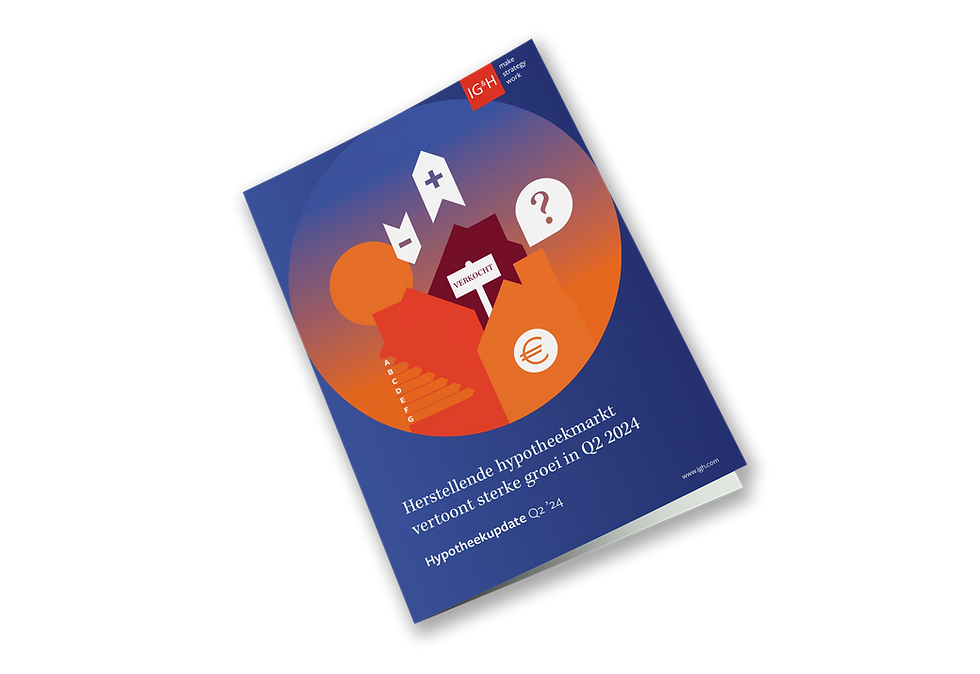Innovation? Don't let IT hold you back
- nathanvankan8
- Feb 11, 2021
- 4 min read
Updated: Aug 22, 2021

Innovation in the mortgage sector hasn’t always kept up with the pace market participants might desire. Today’s sustained low interest climate – and a lack of opportunities for differentiation – is beginning to force innovations. Whether this means raising efficiency, improving the facilitation of personalised service or the introduction of complementary services that do not depend on interest margins. Although fintechs and big techs have not entered the Dutch mortgage market yet they are much more active on foreign mortgage markets. For now, Google Plex focuses on payment and saving accounts. But in the United States and the United Kingdom (Yolt from ING), we’re seeing the first steps towards open banking in mortgages. These newcomers don’t pose an acute threat yet, but will grow to be competitors of mortgage providers between now and 2025.
Many traditional mortgage providers suffer from technology lag, that results in high operational burdens and affects agility. Introducing new technologies (cloud, microservices, replatforming, APIs) can offer big advantages, but does not guarantee success. At the same time, the implementation can feel like open-heart surgery.
We’ve identified three important leading principles to make innovation successful:
Strategy and the desirable client impact are the determining factors, IT follows
A flexible composable mindset
Having a structured approach to process and IT improvements
Strategy and the desirable client impact are the determining factors
IT-renewal is just one of the necessities in supporting strategic changes. The leading principle is that technological renewal should always serve the organisation’s strategy and customer service, rather than becoming an obstacle. IT should create the capability to innovate, in line with strategy. This means that IT employees need to have sufficient understanding of business processes, framing IT processes as enablers for optimising business processes. Likewise, leaders need to understand the added value, urgency, and possibilities that technology brings, in order to choose the right direction. If this knowledge is not present in the leadership team, an explicit CIO-role should be created.
A flexible composable mindset
Although it’s technology that is responsible for both threats (like big techs) and opportunities (modern, composable IT-solutions), the key to successful innovation lies not in adopting technology, but in adopting in the right mindset. Embracing the composable banking mindset is key. In this mindset, business models are not fixed, but components can be flexibly added, removed, or replaced. It enables companies to share some responsibilities with external parties, allowing them to tap into the newest technologies, to reach new demographics or to launch new products and optimise processes.
An example is the English online mortgage provider Molo, which is available through both Alexa and the marketplace from Starling bank. The latter marketplace also hosts a different mortgage provider, Habito, alongside several suppliers of additional services like online bookkeeping. Starling offers all relevant services for clients under one roof and Molo is present on platforms their (potential) clients already might use. Another example of the composable banking mindset is Monzo. This British neobank offered saving targets as an additional service to their clients, provided by a partner. Later on, they swapped this external service out for their own. Monzo also offers the possibility to switch to a new energy supplier, facilitated by a partner within Monzo’s own app.
It is crucial for a mortgage provider to contemplate which elements of the customer journey it desires to keep inhouse and which elements to outsource, whether it is to save money or to add new services. In doing so, the company’s business model should no longer be viewed as a linear – static – chain, but as a component of a wider, more flexible, value network. This goes beyond a traditional ‘make or buy’ decision for business processes; the company’s services become mashups of many and varied (small) components, spanning internal and external capabilities.
A modern, composable banking platform (like Mambu) helps to support these choices. Through such a platform, offering or buying new (online) services and cooperating with new partners becomes much easier. When your own processes are flexible, innovation is not dependent anymore on the slowest link in the chain (“if all market participants really want this, I could participate, but I can’t make exceptions in my process”).
Having a structured approach to process and IT improvements
Introducing new processes and systems (or replatforming) is challenging. IT projects regularly fail, even when adding new services isn’t even in scope. A structured approach that ensures technological change is linked to customer value contributes to success. This approach should be focused on implementing strategic choices, and should enable leaders to take control, rather than being held back by IT.
Key questions to be asked at an early stage are:
Which responsibilities and business functions (or rather, capabilities) do we distinguish?
How do they contribute to the strategy and the desired result?
Which IT facilities should be extremely flexible (and which need not be)?
Model Based Engineering (MBE) is a suitable approach. This proven methodology does not only answer these questions, but also maps the company, its products and data in detail. This is used to draft specifications for new IT in an incremental fashion, which ensures that specifications are first-time-right, comply with the law and regulations, and are future proof (extendable).
With ‘tech savvy’ leadership, a flexible mindset and the right approach, IT challenges need not be a hurdle to the innovation that mortgage providers need.
Interested to learn more about this subject, or to talk about how this applies to your organisation? Reach out to us!
Contact
Wouter van den Berg
Principal Consultant bij IG&H
Joppe Smit, Director bij IG&H E: joppe.smit@igh.com



